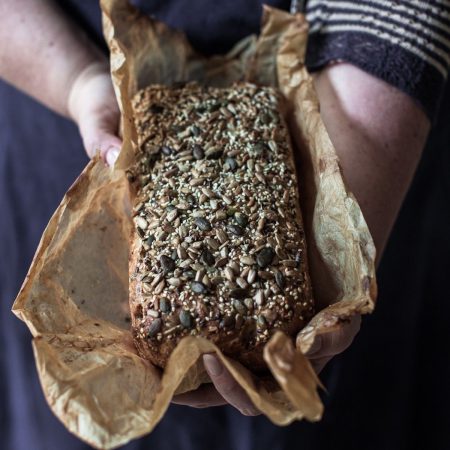A tartine is an open-faced sandwich that can be served with either sweet or savoury toppings. You’ll often see them in cafes or bakeries, served for breakfast or lunch, yet they make a great meal or snack at any time of day. This tartine recipe features wholemeal sourdough bread made with our freshly milled botanical blends, topped with whipped ricotta cheese, fresh greens and pickled radishes with shallot. Learn how making these tartines can nourish your gut microbiome by following the seven core principles. To access to the most comprehensive online sourdough course and our library of video tutorials, sourdough recipes, expert interviews and tips, subscribe now to The Sourdough Club. Learn to make Sourdough and you can order a free starter to get you going. Start your journey today & discover why sourdough is the healthiest bread. Find out more about how sourdough is the healthiest bread, and apply our 7 core principles to your baking to help your digestion & benefit your overall health & wellbeing. There is a world of information inside the club with core knowledge, so you learn to understand sourdough and a have whole community of bakers to support you. It's alive with baking and conversations, with the latest research, tips, regular inspiring recipes and brilliant webinars, an interactive forum, as well as discounts for members. You also get updates with news to be in the know before anyone else about the latest books by Vanessa Kimbell, and courses at the Sourdough School. To join the Sourdough Club click here If you are not able to join at the moment then please subscribe to our Sourdough Club magazine and keep up to date In the meantime, please do follow us on Instagram & Facebook LOVE BAKE NOURISH
Whipped Ricotta Sourdough Tartines with Pickled Radish
Learning Objective
You will learn how to make tartines that will nourish your gut microbiome by following the core principles.
Learning Outcome
You will understand that topping your sourdough with fermented vegetables and cheese can be a great source of prebiotic fibre and protein.
All reasonable care is taken when writing about health aspects of bread, but the information it contains is not intended to take the place of treatment by a qualified medical practitioner. You must seek professional advice if you are in any doubt about any medical condition. Any application of the ideas and information contained on this website is at the reader's sole discretion and risk.



